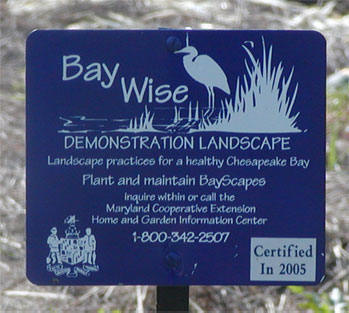 The opening pages of the novel Chesapeake by James Michener describe the
Chesapeake Bay as it may have been originally. The water was so clear you could see the bottom. The fish were abundant; the marsh grasses were teeming with wildlife. It was a
pristine environment that sustained the indigenous people with its bounty.
The opening pages of the novel Chesapeake by James Michener describe the
Chesapeake Bay as it may have been originally. The water was so clear you could see the bottom. The fish were abundant; the marsh grasses were teeming with wildlife. It was a
pristine environment that sustained the indigenous people with its bounty.
Today the Chesapeake is far from that description. In fact, in spite of a tremendous effort to improve the quality of water and the surrounding
marshes, the Bay is taking its time returning to its former past. The culprit has been pollution caused by the activities of man since the arrival of European settlers in
1607. Since arriving, the settlers found limitless resources that would eventually build the greatest nation ever. Unfortunately there was little thought given to the damage
to the environment. The Chesapeake Bay has since suffered dramatically from the effects of man.
The Chesapeake Bay is actually the drowned river valley of the Susquehanna River. Water flows into the Bay from New York to Virginia. The Bay is
contained within the states of Maryland and Virginia. These two states have undertaken many steps to help minimize the pollution that drains into the bay, but legislation has
been more difficult in neighboring states because the Bay is not located in their state. When pollution enters the watershed in New York or Pennsylvania or West Virginia it
flows away from them and down to us. As a result, any products that are harvested in our Bay could possibly be tainted.
Studies are showing a slight improvement in the quality of the water of the Bay, but since the watershed has had tremendous growth the last 50 years,
cleaning up the Bay has been a huge undertaking. Even though governments can pass laws putting certain restrictions on pollution sources, individuals can make a large impact
through the responsible care of their properties. Large portions of the pollutants that enter the Bay actually originate on individual properties. Most of this is can be
prevented by changes in the way we take care of our homes.
Some of the things we can do are:
- Fertilize wisely. Lawns do very well with fall fertilization. Excessive fertilizers run off and add nutrients to the Bay. This causes algal blooms,
giving the water a greenish look and sometimes killing fish.
- Water the lawn only to keep it alive during the summer months. Drought scause unwatered lawns to turn brown. Most recovered once the rains
returned.
- Use water wisely around the home. Take shorter showers, use the dishwasher and clothes washer on full loads, donít let the water run while brushing
teeth or shaving, and repair plumbing leaks immediately.
- Recycle yard wastes, by composting or grasscycling (leaving the clippings). Make sure your septic system is properly functioning. Clean it out
every 5 years.
- Donít spray insecticides unless you see the insect and its damage. Better yet, use beneficial insects or Bt. There is a lot of information to help
you in this area.
- Use household chemicals sparingly. Never pour them down the drain. Instead, dispose of them during the collection days the county sponsors from
time to time.
- Every person who lives in the watershed of the Chesapeake Bay has a responsibility to take care of our land. If everyone made positive changes we
could see a dramatic increase in the quality of the Bay. In the short term we would also see improvement in our own local environment. After all, it just makes good sense.
Read other articles on ecological gardening & native plants
Read other article by Charlie Metz